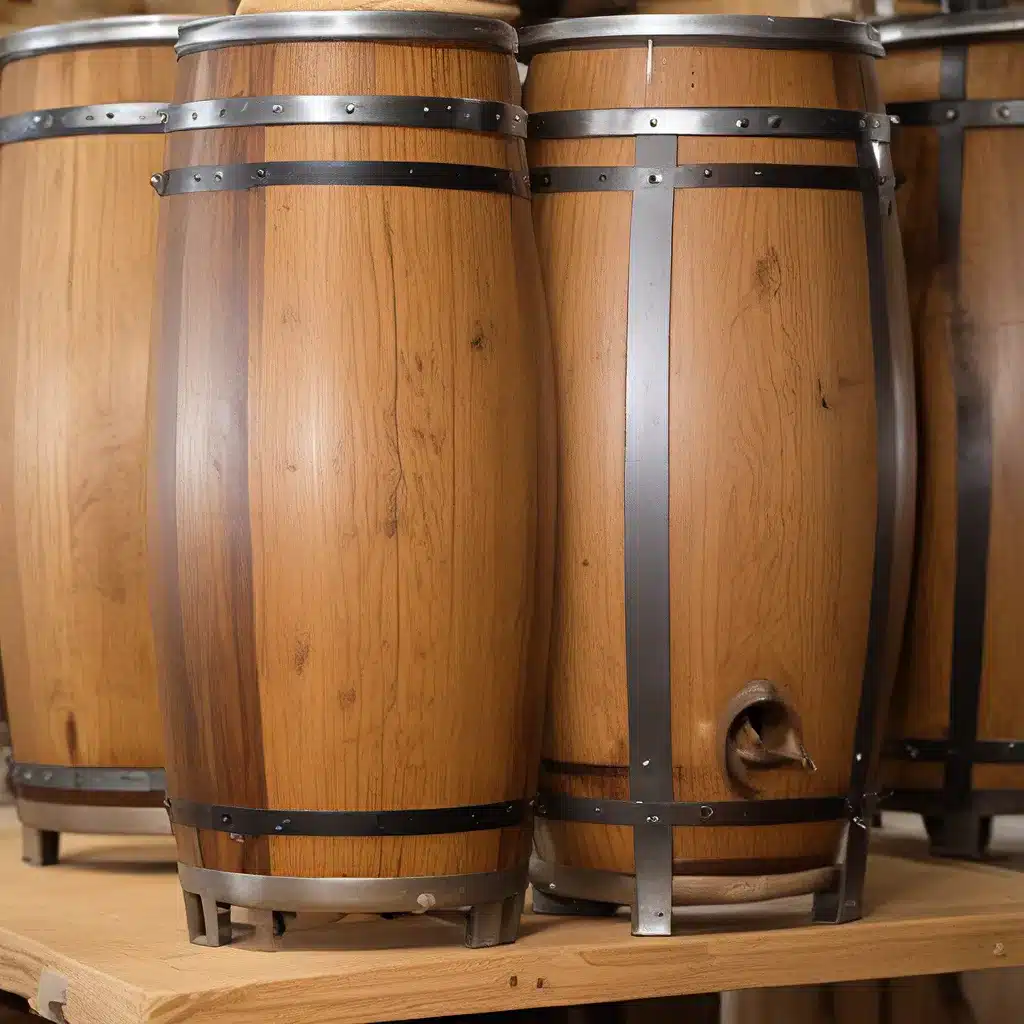
The Magic of Wooden Barrels: A Homebrewer’s Journey
As a passionate homebrewer, I’ve always been fascinated by the art of crafting the perfect brew. From fine-tuning my mash temperatures to experimenting with esoteric hop varieties, I’ve explored countless techniques to push the boundaries of my beer-making prowess. But recently, I discovered a new frontier that has truly captured my imagination: the world of oak aging.
You see, I’ve always been a bit of a mad scientist when it comes to my homebrew. I’m the kind of person who gets excited about the prospect of a stuck fermentation or a surprise yeast mutation. (Yes, I know, I’m a bit of a weirdo.) But when I stumbled upon the wonders of oak aging, it was like the brewing gods had opened up a whole new realm of possibilities for me.
Unlocking the Secrets of Oak Aging
It all started when I stumbled upon a used rye whiskey barrel at my local homebrew shop. The moment I laid eyes on that weathered, charred exterior, I knew I had to have it. I mean, who wouldn’t want to age their beer in a barrel that had previously held the sweet nectar of the gods? (Okay, maybe that’s a bit dramatic, but you get the idea.)
At first, I was a bit intimidated by the idea of working with a barrel. I mean, it’s not like you can just toss it in your fermenter and call it a day, right? No, there’s a whole process involved – sanitizing, swelling, and even waxing the thing to slow down the oxidation process. But hey, I’m a homebrewer, and we’re nothing if not a determined bunch.
As I learned from the good folks at Great Fermentations, the key to taming a barrel is all about understanding the surface-to-volume ratio. See, the smaller the barrel, the faster the beer will interact with the wood, which can lead to some pretty wild flavor profiles. But that also means you’ve gotta be on your game when it comes to controlling oxidation and bacterial infections. It’s a delicate dance, but trust me, the payoff is worth it.
Mastering the Art of Oak Aging
Now, I know what you’re thinking: “Oak aging? Isn’t that just for the big-shot commercial breweries?” Well, my friends, I’m here to tell you that you couldn’t be more wrong. In fact, some of the most incredible beers I’ve ever tasted have come from the humble efforts of homebrewers like myself, who’ve embraced the power of oak.
Take, for instance, the time I aged a porter in a used Jack Daniels barrel. I’ll never forget the moment I popped the first bottle and was hit with that glorious aroma of vanilla, caramel, and just a hint of that unmistakable whiskey punch. It was like a love letter to my taste buds, and I knew I’d discovered something truly special.
Of course, as the folks over on Homebrew Stack Exchange will tell you, there’s a bit of an art to properly sanitizing and preparing your oak before you let it loose in your brew. Do you go the route of soaking it in booze? Or maybe you prefer the dry heat method, toasting those babies in the oven until they’re just right? Personally, I’m a fan of the boozy approach – there’s just something about that subtle spirit flavor that really takes my beers to the next level.
Embracing the Unexpected
But you know, it’s not just about the oak itself. What I’ve truly come to love about this whole process is the element of surprise. See, every barrel is a unique snowflake, with its own set of quirks and personality traits. You never know quite what you’re going to get, and that’s half the fun!
Take, for instance, the time I scored a 15-gallon used rye barrel from our friends at The Up & Under Pub. I had grand visions of crafting the ultimate rye ale, with that signature spicy kick and a smooth, oaky finish. But when I went to rack my beer into the barrel, I realized that I had a bit of a problem on my hands.
Turns out, those smaller barrels are a bit of a double-edged sword. On the one hand, the increased surface area means the flavors get extracted faster – score! But on the other, that also means the darn thing can start to oxidize and go sour at the drop of a hat. Yikes!
Undeterred, I did what any self-respecting homebrewer would do: I broke out the wax, baby! Yep, I turned my barrel into a veritable work of art, meticulously coating the exterior to slow down that pesky oxidation process. And you know what? It worked like a charm. That rye ale ended up being one of the most complex and downright delicious beers I’ve ever produced.
The Joys of the Unexpected
I guess what I’m trying to say is that oak aging may seem like a daunting task, but it’s also one of the most rewarding and exciting aspects of the homebrewing journey. It’s a constant dance of experimentation, adaptation, and just a dash of good old-fashioned luck.
And you know, that’s kind of what I love about this whole hobby, isn’t it? The fact that you never quite know what’s going to happen, that every batch is a new adventure. It’s like being a mad scientist, constantly pushing the boundaries of what’s possible, all while surrounded by the sweet, sweet aroma of freshly milled grain and bubbling fermentation.
So, if you’re a homebrewer looking to take your craft to new heights, I highly encourage you to embrace the world of oak aging. Whether you’re working with a full-sized barrel or just a few toasted chips, the possibilities are endless. Who knows, you might just stumble upon the next great craft beer sensation – and have one heck of a fun time doing it.

